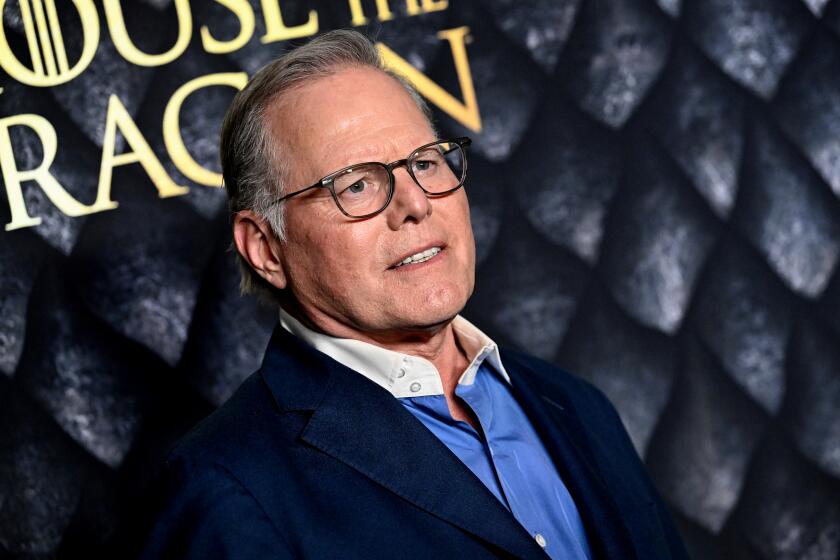Playing ‘White Knight,’ Eastman Kodak Offers $5.1 Billion for Sterling
- Share via
Eastman Kodak agreed Friday to pay $5.1 billion for Sterling Drug, rescuing the maker of Bayer aspirin from an unwanted takeover by a Swiss drug firm.
Kodak’s offer for Sterling substantially topped an earlier $4.65-billion bid from F. Hoffmann-La Roche, best known for its Valium tranquilizer.
The merger would make Kodak, a camera and photographic film giant, a major force in the drug industry.
Over the past four years, Kodak has invested in several biotechnology firms to reduce its dependence on cameras and film, but Friday’s agreement accomplishes this diversification for Kodak in a big way. Sterling, with sales of $2 billion in 1986, has a stable of established over-the-counter drug products and a strong distribution system.
Following the merger announcement, Hoffmann-La Roche gave up its pursuit of Sterling, saying Kodak’s $89.50-a-share offer was too rich.
“We offered what we feel is a fair price,” said Fritz Gerber, who is chairman and chief executive of Hoffmann-La Roche. “The price agreed upon by Kodak and Sterling does not fit with our investment criteria.”
Sterling’s board rejected Hoffmann-La Roche’s offer last weekend. At the time, Sterling said it desired to remain independent but was also talking to other possible merger partners.
Besides Bayer aspirin, Sterling manufacturers Phillips Milk of Magnesia, Panadol and Midol. It also makes consumer products, including Lysol cleaner and Mop & Glo.
Earnings Tend to Fluctuate
Sterling’s over-the-counter brands are well known and have a loyal consumer following, a prime attraction for Hoffmann-La Roche, a prescription drug maker whose earnings fluctuate with the level of success achieved in the research laboratory.
Investment analysts said Sterling’s over-the-counter drugs will also benefit Kodak. Robert K. Hedrick, an analyst with the Dallas investment firm Eppler, Guerin & Turner, said Kodak’s earnings tend to fluctuate with the economy.
In bad times, consumers tend to cut back on expenditures for camera equipment and film, Hedrick said. On the other hand, he said, “drugs are something you have to have. Drug sales aren’t affected so much by the economy.”
Over the past few years, Kodak has invested in drug companies in an effort to reduce its dependence on the film business. Hedrick said that during the past decade, Kodak has lost ground to foreign photographic film companies, especially Fuji.
Will Operate as a Subsidiary
Kodak has equity interests in several drug companies, including Cytogen, a Princeton, N.J., manufacturer of products for the diagnosis and treatment of cancer, and Neorx, a Seattle firm that makes anti-cancer proteins. It recently sold its interest in ICN Pharmaceuticals, a Costa Mesa drug maker that, ironically, owns a large stake in Hoffmann-La Roche. Kodak also has a joint-venture program to develop synthetic biochemical processes with Amgen, a biotech firm that is based in Thousand Oaks.
Kodak said its drug business, including a research facility in Philadelphia, would be absorbed by Sterling Drug, which will be operated as a Kodak subsidiary.
Hedrick noted that Kodak’s investments in drug companies haven’t fared that well. The company has performed better in its health sciences group, which makes diagnostic equipment and film for X-ray machines.
Sterling is a leader manufacturer of diagnostic dyes for use with X-rays and other diagnostic equipment. Its newest dye, Omnipaque, posted sales of $100 million last year and is Sterling’s best-selling prescription drug.
“The merger immediately provides the worldwide drug registration and marketing infrastructure that we have sought to bring Kodak’s discovery efforts closer to the marketplace,” Kodak Chairman and Chief Executive Colby H. Chandler said in a statement. “In addition, it brings with it a successful over-the-counter drug business that is consistent with our long-term pharmaceutical strategy.”
Kodak said it would pay for Sterling by borrowing the entire $5.1 billion. Henry Kaska, a spokesman for Kodak, based in Rochester, N.Y., said further details weren’t available.
The borrowings to pay for the Sterling acquisition would swell Kodak’s debt to about $8.1 billion from $3 billion. The company has about $3 billion in equity.
Hedrick expressed doubts about the amount Kodak plans to borrow. He said that Kodak lost an important patent dispute involving instant photography to Polaroid. The court hasn’t set a damage award, but Hedrick said it was conceivable that Kodak would have to pay Polaroid between $500 million and $1 billion.
With $696 million in cash, Kodak could afford to pay a $500 million award, Hedrick said, but “I would be leery of borrowing heavily with that kind of potential payout.”
The merger will have an effect on Kodak’s cash flow. In a statement, Chandler said he expects the merger to generate a positive cash flow in two years and contribute to earnings in three years. He said the acquisition would slightly dilute Kodak’s estimated earnings, but the dilution would be eliminated by the fourth quarter.
A company spokesman said Kodak expected to remain profitable in 1988. In 1986, it earned $374 million on sales of $11.5 billion.
More to Read
Inside the business of entertainment
The Wide Shot brings you news, analysis and insights on everything from streaming wars to production — and what it all means for the future.
You may occasionally receive promotional content from the Los Angeles Times.







